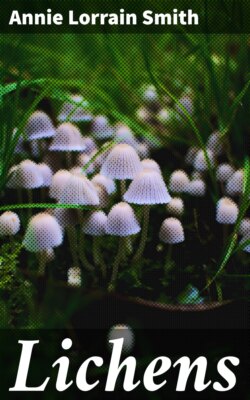Читать книгу Lichens - Annie Lorrain Smith - Страница 22
На сайте Литреса книга снята с продажи.
D. Theories as to the Origin of Gonidia
ОглавлениеThough the relationship between the gonidia within the thallus and free-living algal organisms seemed to be proved beyond dispute, the manner in which gonidia first originated had not yet been discovered. Bayrhoffer[172] attacked this problem in a study of foliose and other lichens. According to his observations, certain colourless cells or filaments, belonging to the “gonimic” layer, grew in a downward direction and formed at their tips a faintly yellowish-green cell; it gradually enlarged and was at length thrown off as a free globose gonidium, which represented the female cell. Other filaments from the “lower fibrous layer” of the thallus at the same time grew upwards and from them were given off somewhat similar gonidia which functioned as male cells. His observations and deductions were fanciful, but it must be remembered that the attachment between hypha and alga in lichens is in many cases so close as to appear genetic, and also it often happens that as the gonidium multiplies it becomes free from the hypha.
In his Mémoire sur les Lichens, Tulasne[173] described the colourless filaments as being fungal in appearance. The green cells he recognized as organs of nutrition, and once and again in his paper he states that they arose directly by a sort of budding process from the medullary or cortical filaments, either laterally or at the apex. This apparently reasonable view of their origin was confirmed by other writers on the subject: by Speerschneider[174] in his account of the anatomy of Usnea barbata, by de Bary[175], and by Schwendener[176] in their earlier writings. But even while de Bary accepted the hyphal origin of the gonidia, he noted[177] that, accompanying Opegrapha atra and other Graphideae, on the bark were to be found free Chroolepus cells similar to the gonidia in the lichen thallus. He added that gonidia of certain other lichens in no way differed from Protococcus cells; and as for the gelatinous lichens he declared that “either they were the perfect fruiting form of Nostocaceae and Chroococcaceae—hitherto looked on as algae—or that these same Nostocaceae and Chroococcaceae are algae which take the form of Collema, Ephebe, etc., when attacked by an ascomycetous fungus.”
All these investigators, and other lichenologists such as Nylander[178], still regarded the free-living organisms identified by them as similar to the green cells of the thallus, as only lichen gonidia escaped from the matrix and vegetating in an independent condition.
The old controversy has in recent years been unexpectedly reopened by Elfving[179] who has sought again to prove the genetic origin of the green cells. His method has been to examine a large series of lichens by making sections of the growing areas, and he claims to have observed in every case the hyphal origin of the gonidia: not only of Cystococcus but also of Trentepohlia, Stigonema and Nostoc. In the case of Cystococcus, the gonidium, he says, arises by the swelling of the terminal cell of the hypha to a globose form, and by the gradual transformation of the contents to a chlorophyll-green colour, with power of assimilation. In the case of filamentous gonidia such as Trentepohlia, the hyphal cells destined to become gonidia are intercalary. In Peltigera the cells of the meristematic plectenchyma become transformed to blue-green Nostoc cells.
A study was also made by him of the formation of cephalodia[180], the gonidia of which differ from those of the “host” thallus. In Peltigera aphthosa he claims to have traced the development of these bodies to the branching and mingling of the external hairs which, in the end, form a ball of interwoven hyphae. The central cells of the ball are then gradually differentiated into Nostoc cells, which increase to form the familiar chains. Elfving allows that the gonidia mainly increase by division within the thallus, and that they also may escape and live as free organisms. His views are unsupported by direct culture experiments which are the real proof of the composite nature of the thallus.
